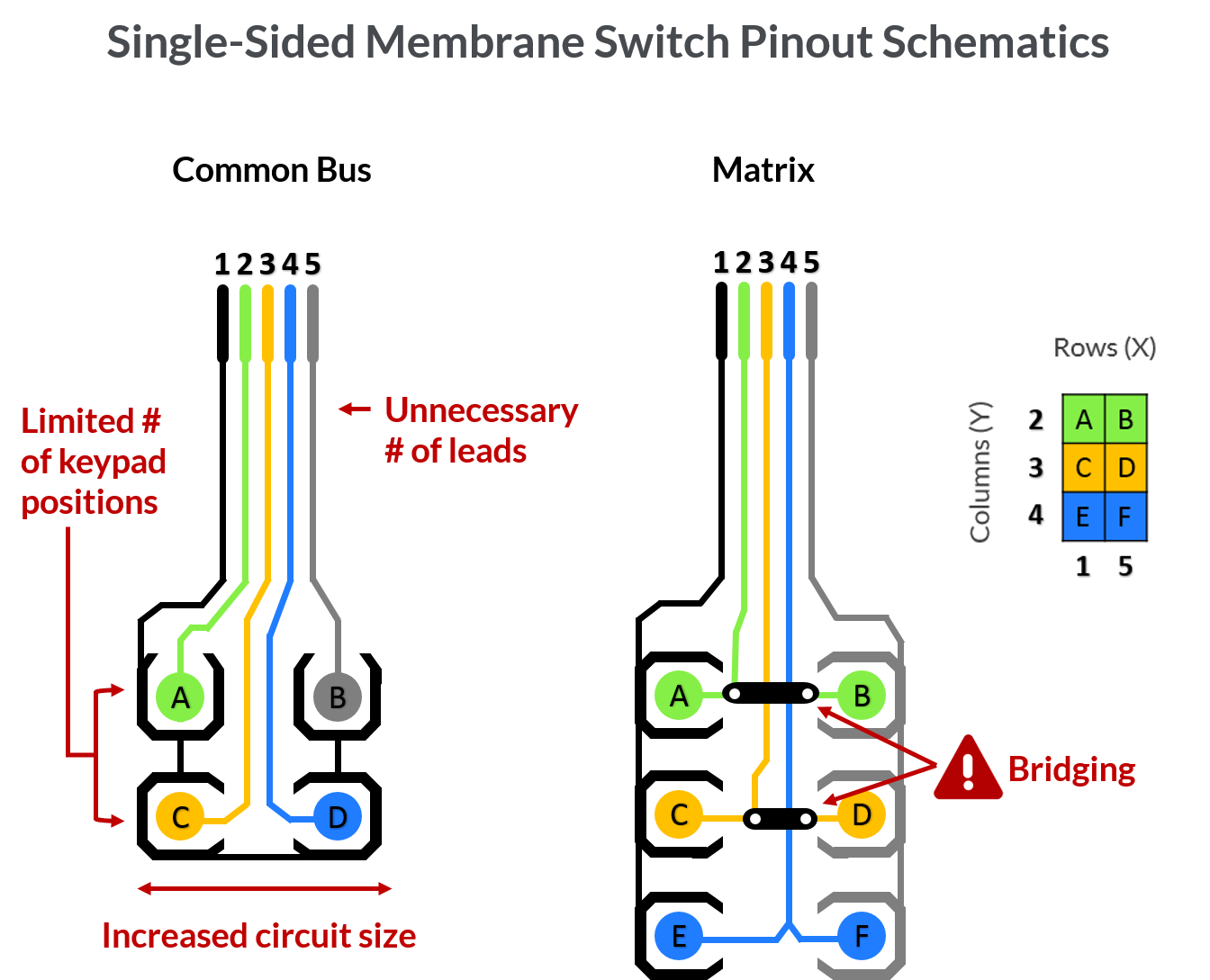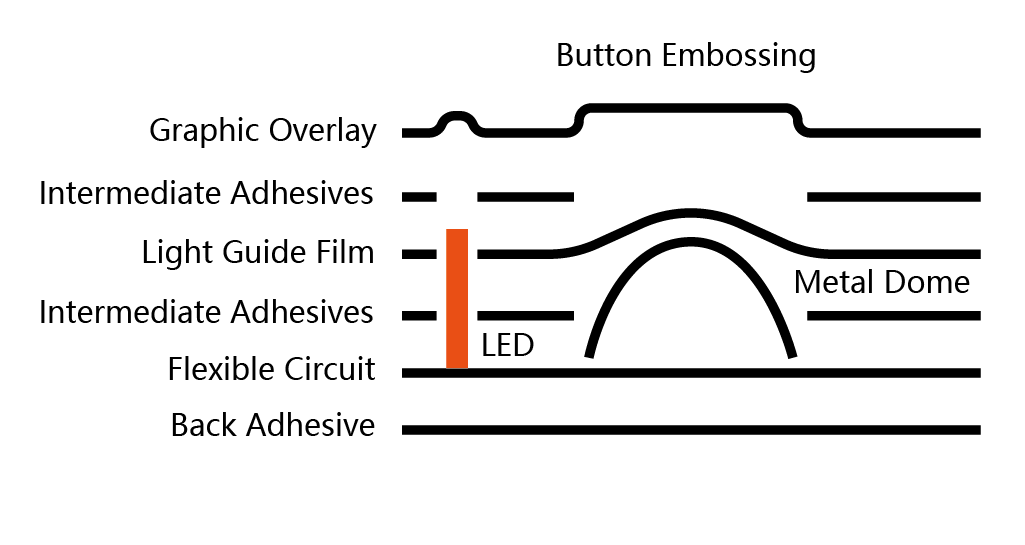Membrane switch vs. traditional buttons: which to choose?
Wiki Article
Recognizing the Value of Membrane Switch Over in Modern Electronic Devices
Membrane layer buttons are integral components in contemporary electronic tools. They offer a mix of functionality and style that boosts customer interaction. Their sturdy and light-weight nature makes them ideal for numerous applications. As markets develop, the need for modification and progressed features expands. Recognizing exactly how membrane switches over contribute to innovation reveals their value in shaping the future of electronics. What exists in advance for this innovation?The Essentials of Membrane Switch Technology
Commonly overlooked, membrane button innovation plays a crucial duty in the modern-day electronics landscape. These devices, made up of numerous layers, work as customer interfaces for various digital products, varying from family appliances to clinical devices. A normal membrane layer button is composed of a visuals overlay, a spacer layer, and a circuit layer, which are thoroughly put together to develop a functional interface.When pressure is related to the overlay, the circuit layer is completed, allowing signals to be transmitted to the gadget. This technology is known for its convenience, making it possible for modification in functionality, design, and form to fulfill particular customer needs. Furthermore, membrane layer buttons are thin and light-weight, making them suitable for applications where area is a premium. Their toughness and resistance to environmental factors better improve their charm, ensuring they can hold up against rough problems while preserving performance. In general, membrane layer button innovation is essential to developing efficient and easy to use digital gadgets
Secret Advantages of Membrane Layer Changes
Membrane layer changes offer a number of key advantages that make them a recommended selection in different electronic applications. Their layout permits a small form variable, making it possible for suppliers to create sleek and light-weight tools. Additionally, membrane layer buttons are resistant to dirt, wetness, and chemicals, which improves their resilience and longevity sought after environments. The responsive feedback given by these switches can enhance customer experience, making them intuitive and easy to operate.Furthermore, membrane buttons can be customized with varied graphics and shades, permitting special branding chances. The production procedure is normally cost-efficient, particularly for high-volume production, as it decreases setting up time and simplifies layout. Finally, membrane layer changes require very little maintenance, contributing to reduced general functional prices. These advantages emphasize their expanding appeal in contemporary electronics, where dependability and straightforward interfaces are vital.
Applications Across Various Industries
The convenience of membrane changes allows their extensive fostering across various sectors. In the medical area, they are frequently utilized in analysis devices and patient tracking systems, offering a sturdy interface immune to contaminants. The automobile market uses membrane switches for dashboard controls, boosting user experience with streamlined layouts that stand up to rough conditions. In customer electronic devices, they work as control panels for tools such as microwaves and coffee manufacturers, giving an easy to use user interface that is easy to clean. The aerospace field employs membrane layer buttons in cabin controls, where dependability and space performance are extremely important. In addition, the industrial industry leverages these switches in machinery and control systems to assure durable procedure sought after environments. This broad range of applications click for source underscores the adaptability of membrane buttons, making them integral elements in boosting performance and individual interaction across varied technical landscapes.Customization and Style Versatility

Future Fads in Membrane Layer Switch Development
Arising trends in membrane layer button development indicate an expanding emphasis on boosted performance and assimilation with clever technologies. As consumer need for a lot more advanced digital devices boosts, manufacturers are concentrating on developing membrane switches over that not only serve basic operational duties but likewise include attributes like touch sensitivity, backlighting, and haptic feedback.Furthermore, advancements in products are anticipated to boost durability and environmental resistance, making membrane switches over ideal for diverse applications in industries such as health care, vehicle, and customer electronic devices. The integration of capacitive touch technology is likely to become a lot more widespread, enabling for sleeker styles and enhanced individual interfaces. membrane switch.Additionally, the increase of the Internet of Things (IoT) is triggering the development of membrane switches that can communicate wirelessly with other tools, improving interconnectivity. Generally, the future of membrane switch innovation shows up encouraging, driven by development and the quest of easy to use remediesFrequently Asked Concerns
Just How Do Membrane Layer Changes Contrast to Conventional Mechanical Buttons?
Membrane buttons, being extra space-efficient and offering a streamlined style, contrast with typical mechanical switches that give responsive feedback. The former great site usually feature personalized graphics, while the last generally guarantee sturdiness and dependability in various applications.What Products Are Commonly Used in Membrane Switch Over Production?
Membrane layer buttons are generally generated using products such you can try these out as polyester, polycarbonate, and printed conductive inks. These products give responsiveness, durability, and versatility, making them suitable for various applications in digital devices and interface.Can Membrane Changes Be Repaired or Reused?
Membrane layer switches can usually be repaired, specifically if small problems emerge, such as sticky failure or surface area damages. Complete reuse is normally limited due to wear and prospective degradation of products over time.
Exactly How Do Environmental Variables Influence Membrane Layer Switch Efficiency?
Ecological aspects, such as temperature, exposure, and humidity to chemicals, greatly influence membrane button efficiency. Severe conditions can cause destruction, affecting responsiveness and longevity, ultimately endangering the functionality of the device in different applications.What Is the Typical Life-span of a Membrane Layer Change?
The common lifespan of a membrane layer switch typically varies from 1 to 5 million actuations, relying on aspects such as usage frequency, ecological problems, and the products used in manufacturing, influencing durability and efficiency long life. A common membrane layer switch consists of a visuals overlay, a spacer layer, and a circuit layer, which are thoroughly constructed to produce a functional interface - membrane switch.When stress is applied to the overlay, the circuit layer is completed, permitting signals to be transmitted to the tool. The responsive feedback provided by these switches can enhance user experience, making them easy and user-friendly to operate.Furthermore, membrane switches can be tailored with varied graphics and shades, permitting for distinct branding possibilities. As customer need for much more sophisticated electronic devices boosts, suppliers are concentrating on producing membrane switches over that not just serve fundamental operational roles however also incorporate functions like touch sensitivity, backlighting, and haptic feedback.Furthermore, developments in products are anticipated to enhance resilience and ecological resistance, making membrane changes appropriate for diverse applications in industries such as health care, automobile, and consumer electronics. The integration of capacitive touch innovation is most likely to become a lot more widespread, allowing for sleeker layouts and improved user interfaces.Additionally, the rise of the Web of Points (IoT) is triggering the development of membrane layer switches that can connect wirelessly with various other tools, improving interconnectivity. Membrane layer switches, being extra space-efficient and supplying a sleek design, contrast with traditional mechanical buttons that give tactile responsesReport this wiki page